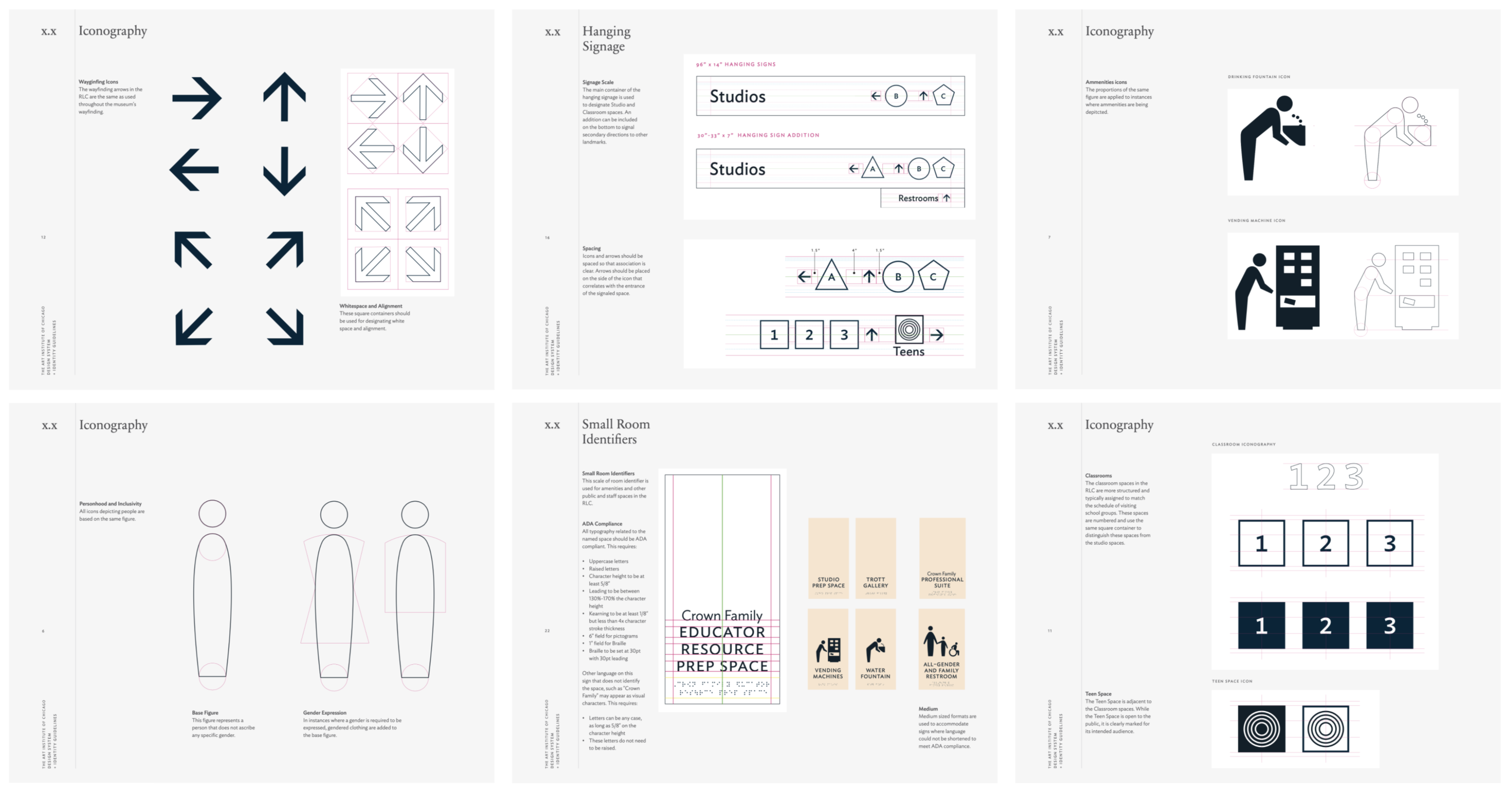
In 2019, the Art Institute hired architecture firm Wheeler Kearns to begin exploring how the museum’s education space could become the most accessible and welcoming hands-on creative space in the country.
In tandem with the architectural changes, the Ryan Learning Center wanted to pivot from a space for children into a community learning space for all ages and abilities.
The space was rebranded and an entirely new service model was created. This design applied universal design practices as well as insights from in-depth research conducted in the space.
![]()
![]()
While Wheeler Kearns was ahead on the spatial updates to the RLC, the most pressing concern was the strategy for how visitors would navigate the space and understand certain invitations or restrictions.
![]()
![]()
![]()
These diagrams above show the wayfinding strategy and design as it developed. Final design and wayfinding system is below, as well as exerpts from the brand guidelines and documentation.
![]()
![]()
In tandem with the architectural changes, the Ryan Learning Center wanted to pivot from a space for children into a community learning space for all ages and abilities.
The space was rebranded and an entirely new service model was created. This design applied universal design practices as well as insights from in-depth research conducted in the space.


While Wheeler Kearns was ahead on the spatial updates to the RLC, the most pressing concern was the strategy for how visitors would navigate the space and understand certain invitations or restrictions.



These diagrams above show the wayfinding strategy and design as it developed. Final design and wayfinding system is below, as well as exerpts from the brand guidelines and documentation.

